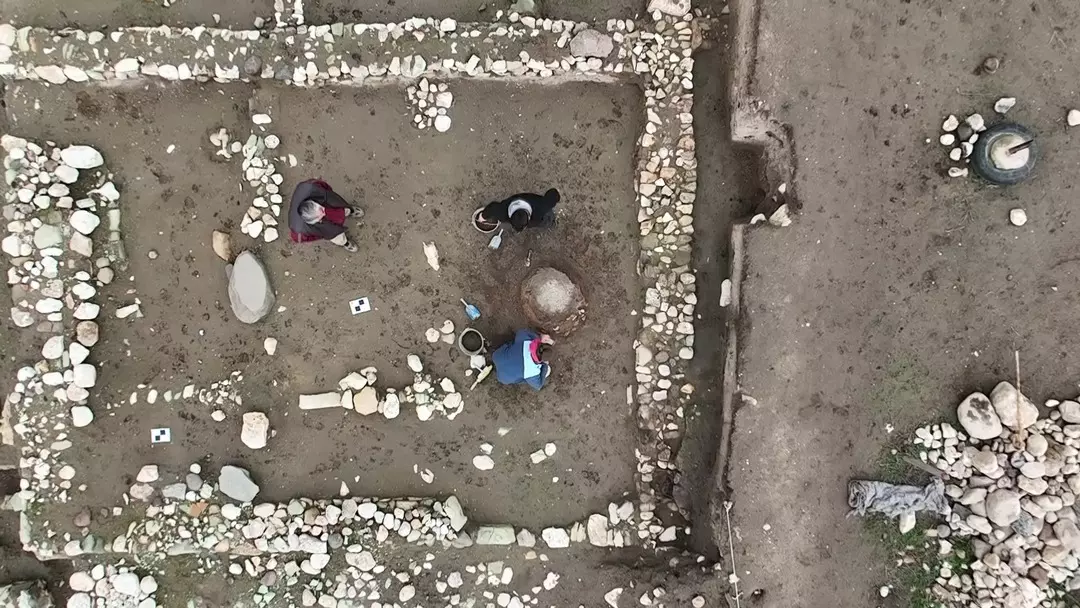Marlborough Mound, located in the town of Marlborough in Wiltshire, England, is an enigmatic and significant Neolithic monument, standing 19 meters (60 feet) tall. This imposing structure ranks second only to the nearby Silbury Hill in height among prehistoric monuments. Modern studies date its construction to around 2400 BC, placing it within a period of intense Neolithic activity in southern Britain. Initially listed as a Scheduled Monument in 1951, it remains one of the most intriguing ancient structures in the region.
Historical and Cultural Context
Marlborough Mound is part of a wider landscape of Neolithic monuments, including the Avebury Ring, West Kennet Long Barrow, and Silbury Hill. Together, these earthworks form a prehistoric complex that continues to attract scholarly interest. The mound is situated on private property within the grounds of Marlborough College, making it less accessible than other Wiltshire monuments.
Throughout its long history, the Mound has served various functions. In the Norman period, it became the motte for Marlborough Castle, a wooden motte-and-bailey fortification commissioned by William the Conqueror in 1067. Later, it was transformed into a garden feature for a stately home and incorporated into the landscape as part of an 18th-century water feature, including a grotto still visible at its base. Marlborough Mound has continually evolved, each era leaving its mark on the structure.
Structure and Location
The mound’s location near the River Kennet places it within a fertile and strategic landscape. Standing at over 18 meters from the ground surface, its summit reaches 149.76 meters above sea level. The base diameter spans 83 meters, with a flat top measuring 31 meters across. Over time, changes have been made to the mound’s structure, notably during the 17th century when the Seymour family cut a spiral path around the mound, still used today.
Archaeological evidence reveals the mound was constructed in several stages, a process likely taking about a century. Core samples taken in 2010 show it is made from layers of various materials, including chalky clay and flinty gravel. Charcoal found in these samples provided radiocarbon dating, confirming its Neolithic origin.
Legends and Purpose
The original purpose of Marlborough Mound remains uncertain, but various legends and theories have been proposed. One local myth suggested that it was the burial place of the legendary wizard Merlin, leading to the town's motto: "Ubi nunc sapientis ossa Merlini" (Where now are the bones of wise Merlin).
Others, like the historian Ronald Hutton, suggest it may have served as an oratorical platform or had ritual significance for the local community. The mound’s proximity to the River Kennet and other ceremonial sites hints at a possible connection to water worship in the Neolithic period.
Investigations and Scholarly Interest
The mound has been the subject of investigation and speculation since the 18th century. Early excavations by antiquarian William Stukeley uncovered Roman coins, leading some to believe the site was once a Roman fort. Further excavations in the 19th and 20th centuries revealed medieval artifacts, including pottery and antlers, fueling debate over the mound’s origins.
In the 21st century, modern scientific methods have shed more light on the mound's history. Core samples extracted by Geotechnical Engineering Ltd in 2010 confirmed its Neolithic origin, dating construction to the late third millennium BC, around the same period as the nearby Silbury Hill.
Conservation and Restoration
In recent decades, concerns over the mound's structural integrity have prompted efforts to conserve and restore it. Overgrown trees threatened its stability, prompting the removal of large trees and the stabilization of the earthworks. In 2016, restoration efforts focused on securing the structure, planting grasses, and injecting a special gel to prevent erosion.
The Marlborough Mound Trust, established in 2000, has spearheaded the conservation efforts, funding archaeological research and educational initiatives to raise awareness about this important prehistoric site. The Trust continues to work on preserving the mound for future generations while fostering academic investigation into its origins and purpose.
Marlborough Mound, a towering relic of prehistoric Britain, remains a fascinating monument with a layered history. From its Neolithic construction around 2400 BC to its later roles as a Norman motte, a stately garden feature, and a site of modern archaeological interest, the mound continues to captivate historians and archaeologists alike. As part of Wiltshire's rich landscape of ancient monuments, Marlborough Mound stands as a testament to the deep and complex history of the region.









